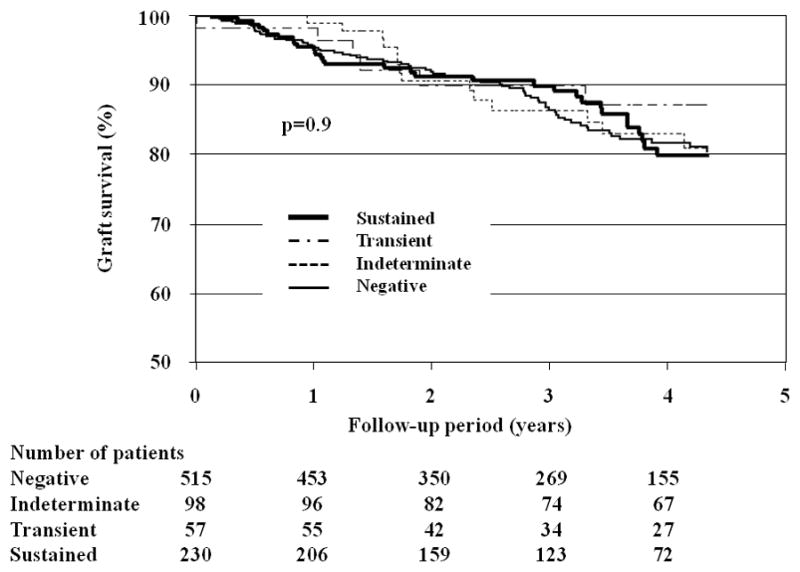Figure 3.

Graft survival in patients classified by BKV status. There were no group-specific differences in either graft or patient survival by Kaplan-Meier analyses. Kaplan-Meier curves were truncated at 4.3 years after the transplantation for graft survival, and 4.5 years for patient survival, because of the small number of patients with follow-up afterwards (75th percentile shown). In the sustained viruria group: 19 grafts failed because of interstitial fibrosis-tubular atrophy (IF/TA). Sixteen (16) patients died with a functioning graft because of heart disease, stroke or malignancy.
The median graft follow up in BKV negative indeterminate, transient and sustained viruria groups were 3.1 (range 0.4–8.1) 3.5 (range 0.5–8.7), 3.6 (range 0.3–8.1) and 3.2 (range 0.4–8.3) years, respectively. Considering patients with functioning grafts, the last serum creatinine (median, range) in the aforementioned groups were also comparable at 1.4 (0.5–12.5), 1.4 (0.4–9.8), 1.4 (0.7–6.2) and 1.6 (0.6–9.8) mg/dl respectively.
